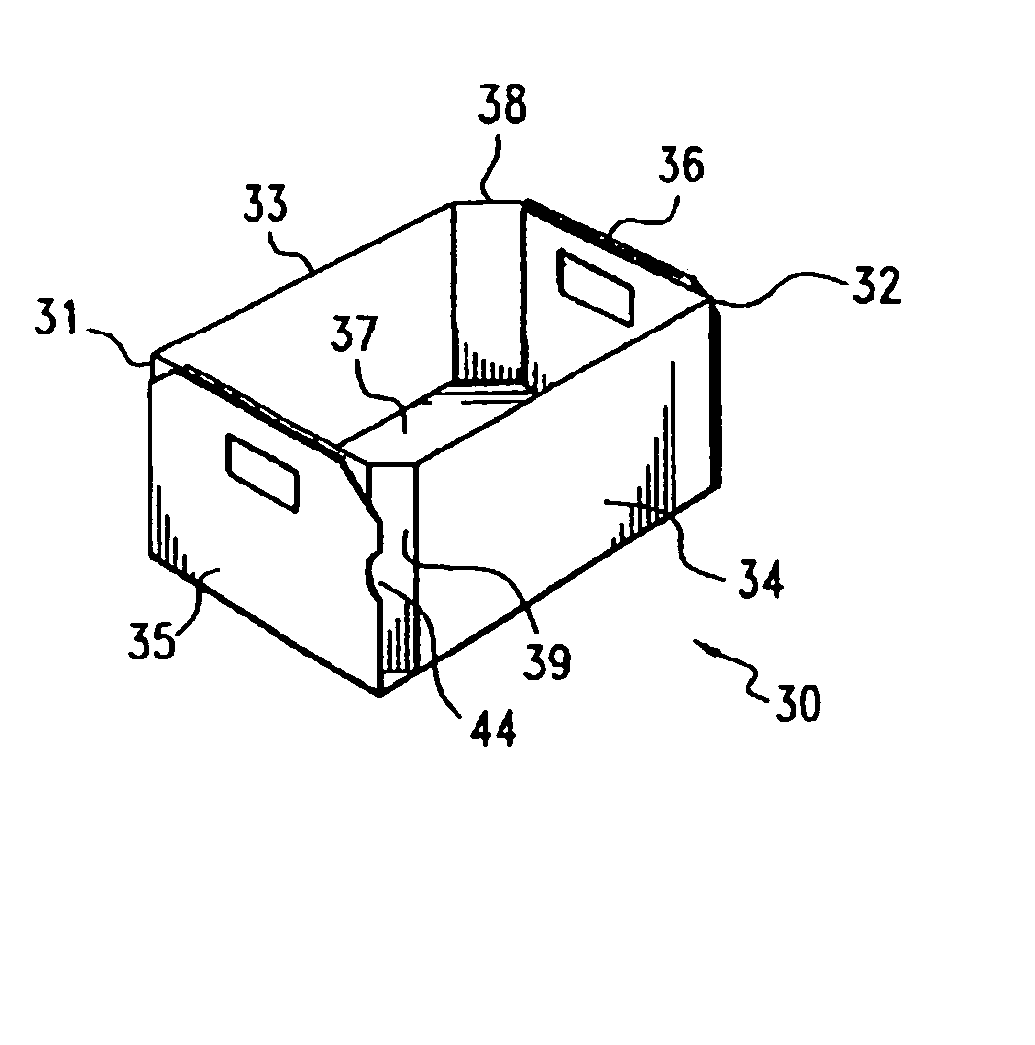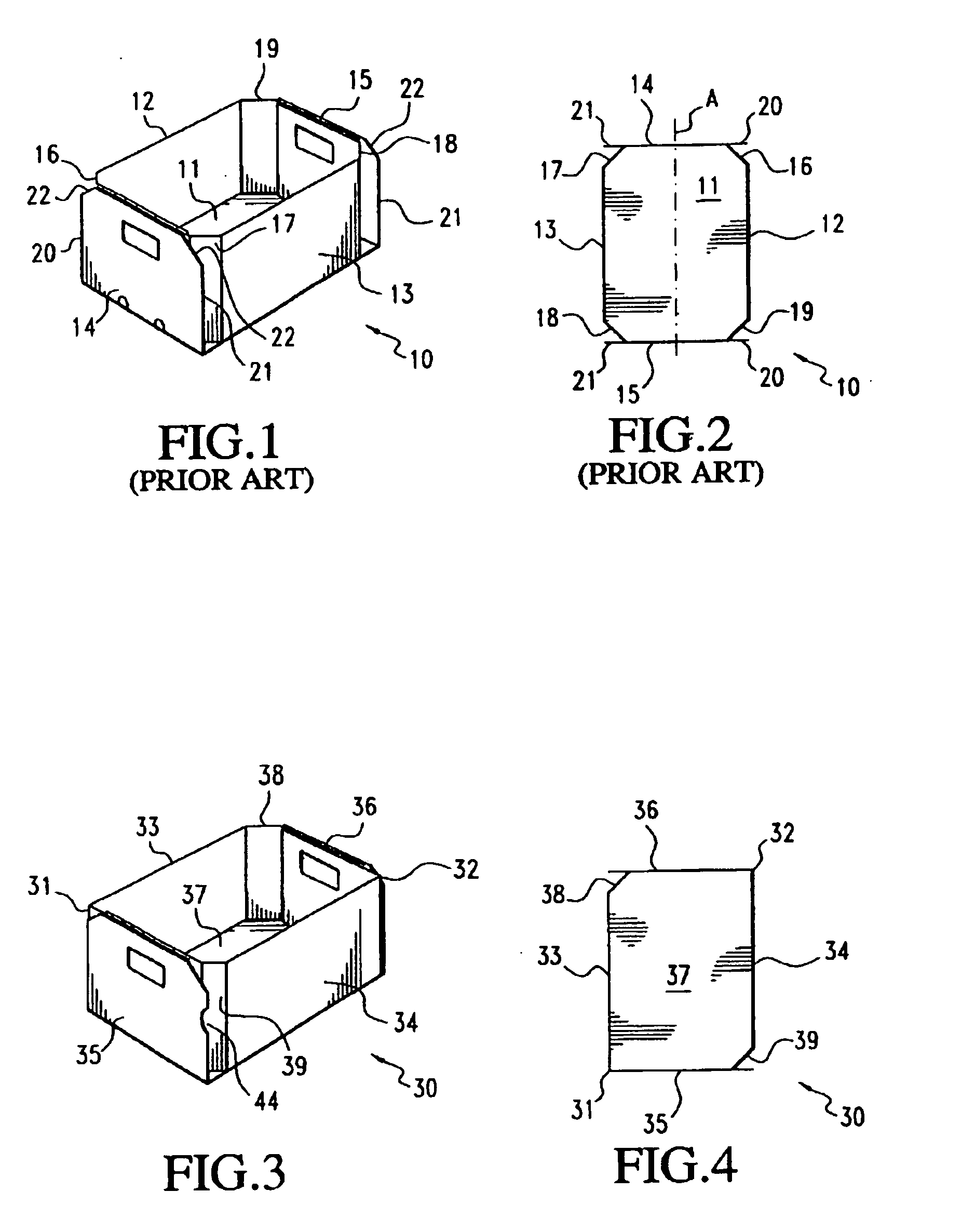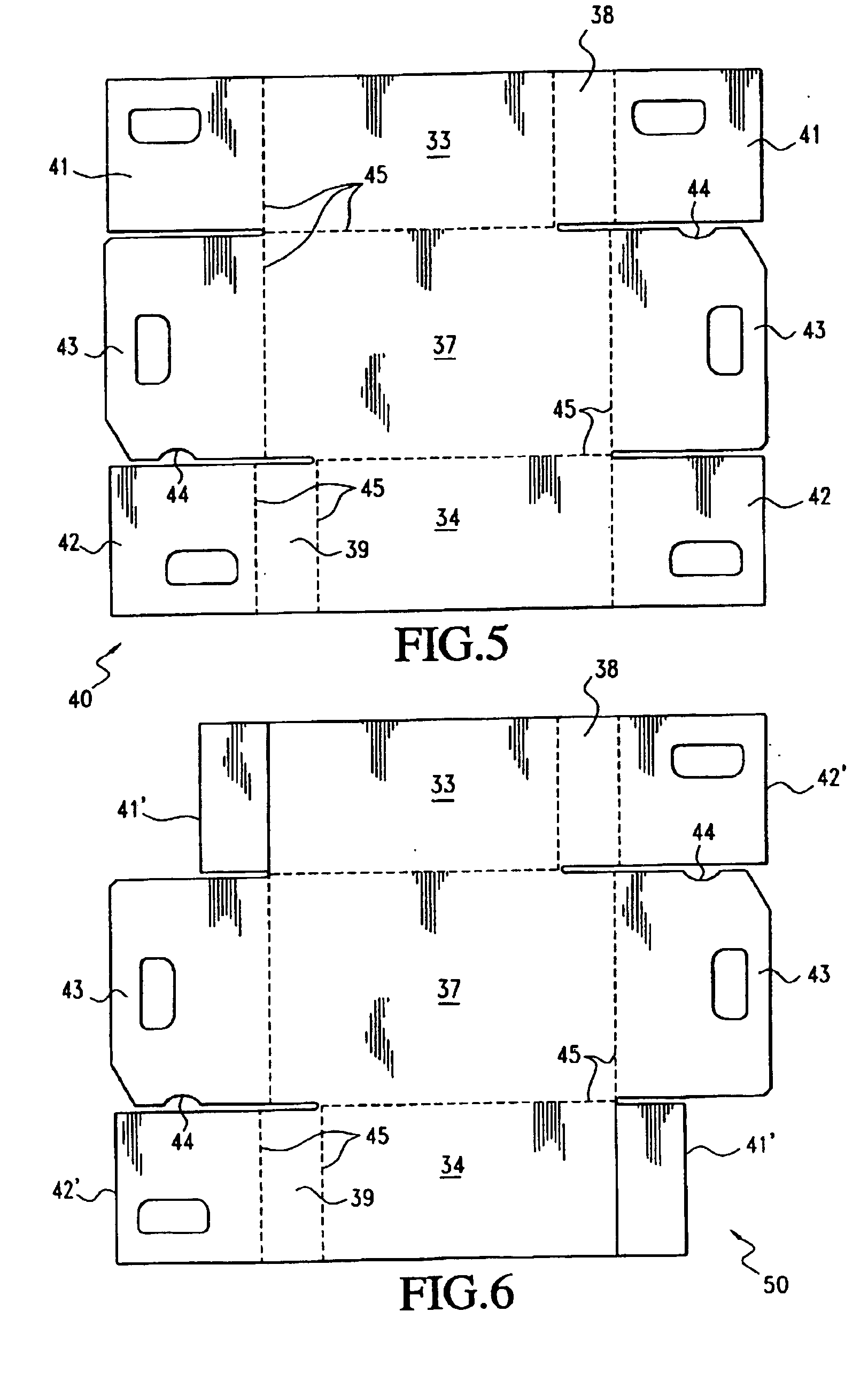Container with improved stacking strength and resistance to lateral distortion
a technology of lateral distortion and container, applied in the field of packaging, can solve the problems of not being as strong as the provided resistance, and achieve the effects of improving the top to bottom compression strength, simple, economical and effective way
- Summary
- Abstract
- Description
- Claims
- Application Information
AI Technical Summary
Benefits of technology
Problems solved by technology
Method used
Image
Examples
first embodiment
[0043] An alternate form of the six sided tray of the first embodiment is depicted at 50 in FIG. 6. The tray in this form of the invention is also configured for machine set up, but the end panels 41′ and 42′ do not overlap with one another. In other respects, the tray shown in this figure is essentially the same as that illustrated in FIGS. 3 and 5.
[0044] Another alternate form of the first embodiment is indicated generally at 60 in FIGS. 7-9. In this form of the first embodiment, the container or tray is configured for manual set up, and has a bottom wall 61, opposite parallel side walls 62 and 63, opposite parallel end walls 64 and 65, an opposed pair of diagonal corner panels 66 and 67, and two diagonally opposed square corners 68 and 69.
[0045] As seen best in FIG. 8, the container of FIG. 7 is erected from a unitary paperboard blank having overlapped end panels 70, 71 and 72 that form the end walls 64 and 65, and which are held in assembled relationship by a self locking arran...
second embodiment
[0048] the invention is indicated at 80 in FIGS. 10-14, wherein the container has seven sides. In a first form of this embodiment, shown in FIGS. 10-12, the container is configured for machine set up, and has three corners 81, 82 and 83 oriented diagonally and only one corner 84 that is squared, producing a seven sided container. In all other respects, this embodiment is essentially the same as that shown in FIGS. 3 and 5. The container 80 has a bottom wall 85, opposed parallel side walls 86 and 87, opposed parallel end walls88 and 89, diagonal corner panels 81, 82 and 83, and the single square corner 84. As seen best in FIG. 12, which depicts the unitary paperboard blank from which the container 80 is erected, the end walls each comprise end panels 90, 91 and 92, which are overlapped and glued together by machine in setting up the container.
[0049] A first modification of the second embodiment is shown at 100 in FIGS. 13 and 14. In this modification, the container is configured for ...
third embodiment
[0051] the invention is shown in FIGS. 16-21, wherein the container has eight sides, and the four diagonal corner panels are each oriented at an angle of 38° with respect to the longitudinal axis of the container.
[0052] In a first form of this third embodiment, depicted at 110 in FIGS. 17 and 18, the container is configured for manual set up and to that end has notches 111 and 112 in the top edges of end panels 113 and 114 that interlock with a roll over flap115 on the top edge of end panels 116. Pairs of cuts 117 and 118 are made transversely across the cut line 119 between the roll over flap 115 and its associated end panel 116, and these cuts are spaced apart a distance approximately the same as the width of the notches 111 and 112 in panels 113 and 114. The cuts define short, narrow webs 120 and 121, which connect the roll over flap to its associated end panel, and in a preferred form, the webs are crushed from the inside of the container. Thus, when the roll over flap is folded...
PUM
 Login to View More
Login to View More Abstract
Description
Claims
Application Information
 Login to View More
Login to View More - R&D
- Intellectual Property
- Life Sciences
- Materials
- Tech Scout
- Unparalleled Data Quality
- Higher Quality Content
- 60% Fewer Hallucinations
Browse by: Latest US Patents, China's latest patents, Technical Efficacy Thesaurus, Application Domain, Technology Topic, Popular Technical Reports.
© 2025 PatSnap. All rights reserved.Legal|Privacy policy|Modern Slavery Act Transparency Statement|Sitemap|About US| Contact US: help@patsnap.com



